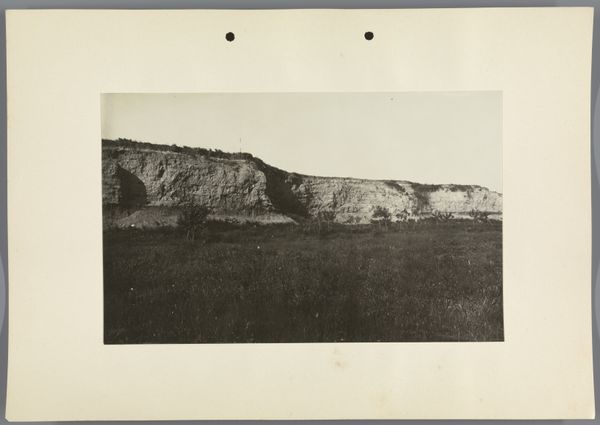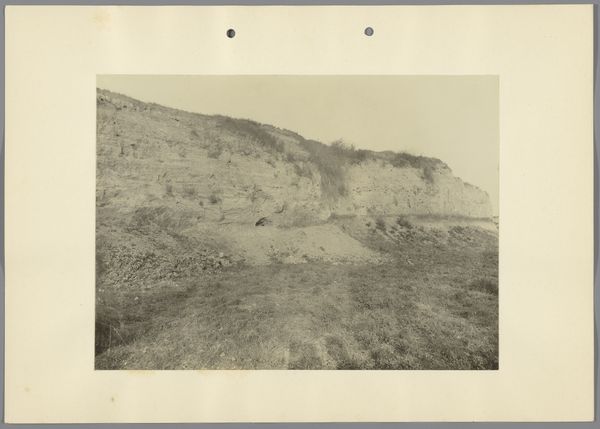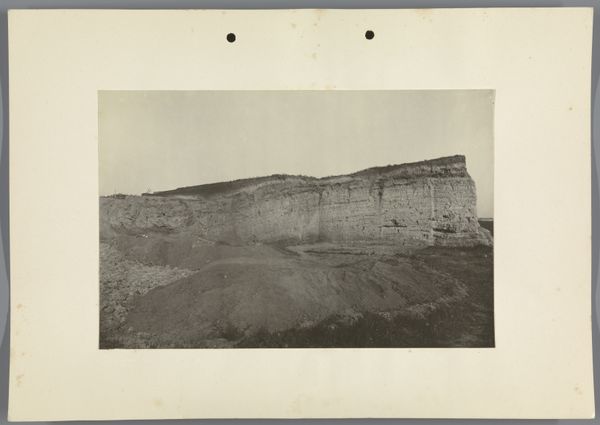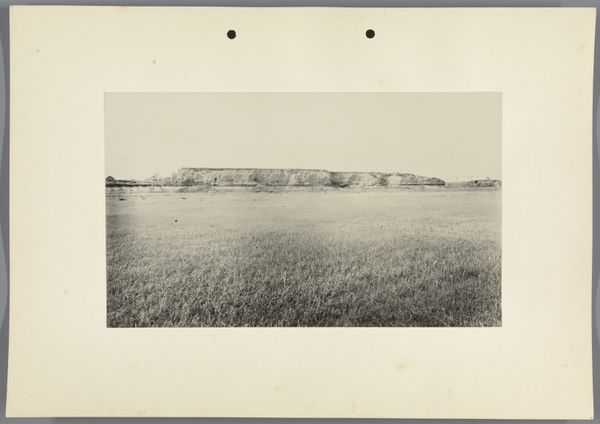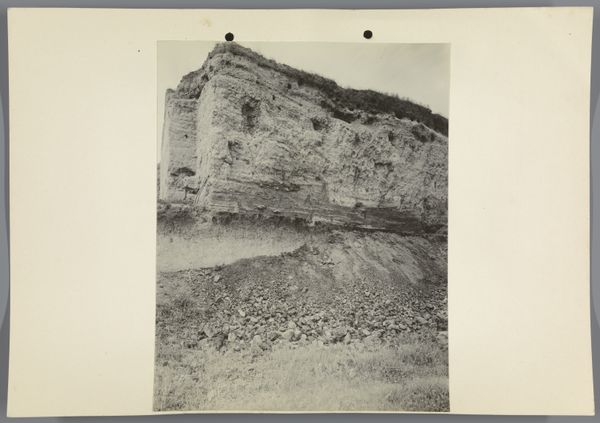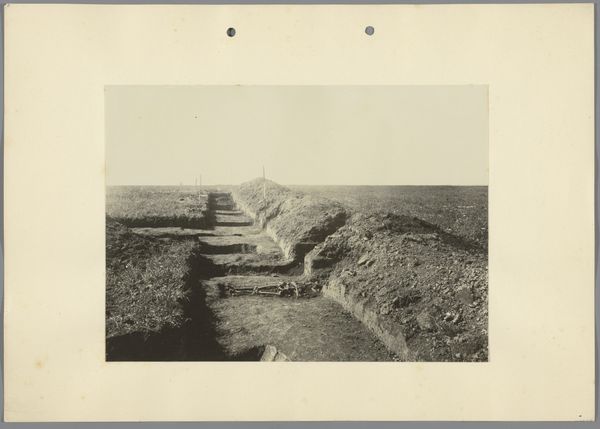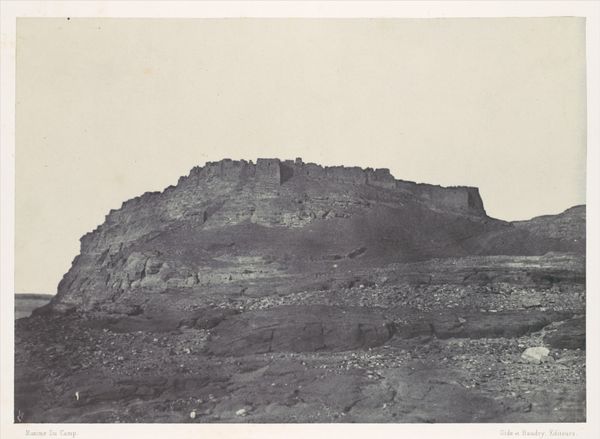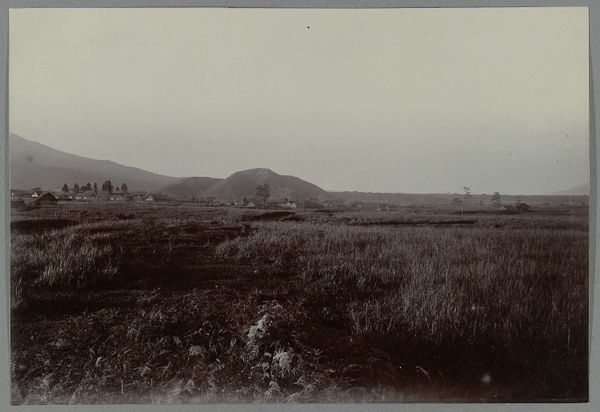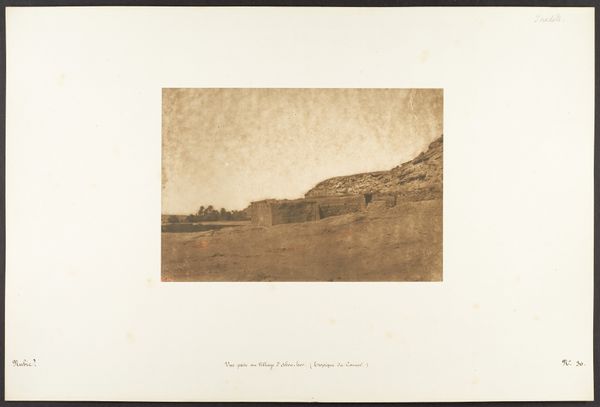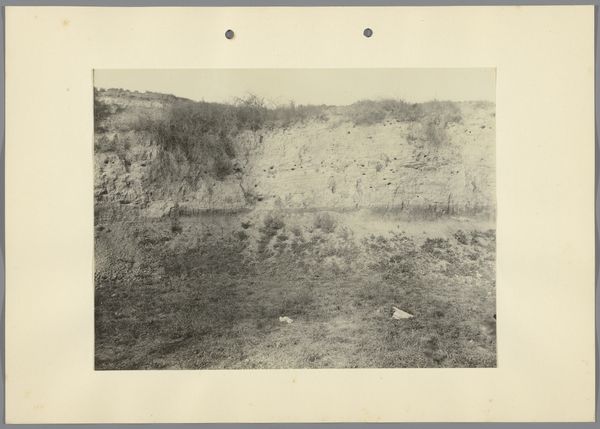
photography, gelatin-silver-print
#
pictorialism
#
landscape
#
photography
#
gelatin-silver-print
#
modernism
#
realism
Dimensions: height 145 mm, width 226 mm, height 240 mm, width 339 mm
Copyright: Rijks Museum: Open Domain
Curator: This gelatin-silver print, "Gezicht op terpen bij Tórzag," by Jan Lanting, dates to 1928. What are your immediate thoughts about it? Editor: Stark. Quiet. I'm drawn to the tonal range, the contrast between the dark foreground and the pale land mass in the background. It's almost as if the land itself is a silent witness. Curator: Indeed. Lanting's photography, particularly in this piece, often invokes the land as a repository of history. The terpen, artificial dwelling mounds, aren’t just geological features; they’re symbols of human resilience against the elements. Consider what the act of building such mounds signified for those early communities. Editor: I see that resilience, but also a possible commentary on vulnerability. Looking at this now, in our era of climate crisis, these protective structures can also speak about human attempts to control nature—efforts that ultimately haven’t been enough. How do you read those mound formations in terms of symbolic value? Curator: Well, within landscape painting, mounds, hills and mountains regularly stand in for protection, groundedness and strength. They have a psychological dimension related to mother figures, the subconscious, but are always linked to concepts of stability. Editor: Interesting that you point that out, and how this symbolism plays out across pictorial representation and different cultural values. Does it concern you, perhaps, that viewers outside the Netherlands might struggle to understand that they're viewing an example of survival against environmental challenges? The threat and survival it embodies? Curator: Absolutely, but this is where we, as interpreters, come in. To connect that universal symbolism to Lanting’s work, specifically this region of the Netherlands in the early twentieth century. The real meaning lies in understanding the tangible historical and environmental context embedded in the symbolism. It bridges cultures. Editor: True. Lanting has really brought this dialogue together so seamlessly, especially given the technological tools he employed. It’s fascinating how he managed to distill complex societal and historical issues through his use of photography. Curator: For me, this is ultimately a contemplative image that resonates with historical memory. Editor: Yes. And its timeless quality continues to raise fundamental questions about our place within, and our impact on, the environment.
Comments
No comments
Be the first to comment and join the conversation on the ultimate creative platform.
